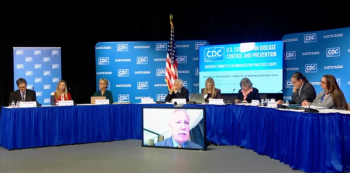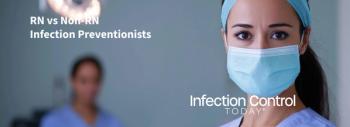
Study Shows Where MRSA Colonizes on the Human Body
When methicillin-resistant S. aureus (MRSA) is carried in the nose (nares), it is a risk factor for an invasive infection, including a surgical site infection. Some studies have found that the heavier the carriage of MRSA in the nose, the greater the risk of transmission to others and the greater risk of infection to the patient. Few studies to date have assessed the differences in quantity of MRSA at different body sites. A new study from Rhode Island Hospital now sheds light on both the quantity of MRSA at different body sites and the relationship between the quantities at different sites. The study is published in the Journal of Clinical Microbiology.
The investigators found that culturing the nose was more likely to reveal MRSA than culturing under the arms (axilla), the groin, or perineum (skin between the rectum and genitals). The researchers also found a strong correlation between the quantity of MRSA in the nose and the likelihood that other body sites were colonized with MRSA -- -- when there was a large quantity of MRSA in the nose of a patient, it was likely that there was also a large quantity of MRSA in their axilla, perineum, or groin as well.
Leonard Mermel, DO, medical director of the department of epidemiology and infection control at Rhode Island Hospital and lead author says, "This study shows us that the quantities of MRSA at different body sites are highly correlated. Also, if screening cultures are to be done for MRSA, it is best to screen the nose and groin to get the highest yield."
Mermel concludes, "We hope that that future studies will assess whether or not a greater number of body sites colonized with MRSA or a greater quantity of MRSA at those body sites impacts the likelihood of future MRSA infections."
The researchers were unable to find a correlation between the number of body sites with MRSA and likelihood of having an active MRSA infection at the time the cultures were obtained or in the year before the study. Of the patients who had MRSA in their nose at the time the cultures were obtained, the quantity of MRSA was surprisingly lower in those patients who had an active MRSA infection as opposed to those that did not have an active infection at that time, or during the year prior to enrollment.
Other researchers in the study include Pauline Covington of Rhode Island Hospital and Jennifer Cartony, Gail Maxey and Dan Morse of 3M Infection Prevention, which funded the study. University Medicine is a non-profit, multi-specialty medical group practice employing many of the full-time faculty of the department of medicine of the Alpert Medical School including Mermel.
Newsletter
Stay prepared and protected with Infection Control Today's newsletter, delivering essential updates, best practices, and expert insights for infection preventionists.






